Article's Content
Timing is everything. The best idea at the wrong moment doesn’t stand a chance. Highspot knows from experience.
They were a relatively unknown company for nearly 7 years until the rise of remote work made the sales enablement platform a necessity—now they’re one of the cool kids on the tech block with big-time customers like Adobe, Okta, Workday, Zillow, and Siemens.
The company closed on $248M in Series F funding in January 2022, bringing Highspot’s post-money valuation to $3.5B—4x what it was 2 years ago.
Here’s where Highspot is today:
- Highspot has now raised $648M in total funding
- The company has grown revenue by 935% over the last 3 years
- Highspot connected 8M+ salespeople, partners, service reps, and customers in 2021 alone (150% increase from the previous year)
- Highspot has 40 customers with 5,000+ sales reps each—1 even has more than 50,000 end-users
- The global sales enablement platform market was estimated to be $1.7B in 2020, and it’s on track to grow 330% by 2028
With numbers like that, it’s no surprise Highspot ranks as one of North America’s fastest-growing tech companies.
Yet, it’s not a new company. Highspot launched in 2012. However, today’s changing working conditions opened up an opportunity for Highspot—and they seized their moment.
Yet, the real surprise is how it happened. What did Highspot do to grow so quickly? Why didn’t they do it earlier? And how can you learn from and replicate their successes in your own marketing programs?
Great questions. We have answers.
Below, we deep dive into the magic sauce behind Highspot’s rapid growth. We look at the business and marketing strategies they’ve used so far, and we also take a peek at their plans to keep the momentum going.
Strike While the Iron’s Hot—Hard and Fast
The pandemic changed the way people work (practically overnight), especially salespeople. Long gone are the days of packing 50-250 salespeople in a room for weekly training. Now, it’s all gone remote.
The conference room isn’t the sales battleground anymore—now, it’s the Zoom meeting. And it’s much harder to charm, delight, and captivate an audience through a digital screen.
“Road warriors have become home warriors,” says Robert Wahbe, Highspot CEO. “Salespeople have to be better than ever in holding the attention of the customer.”
Companies need better sales tactics to close the deal, but that’s easier said than done. It’s harder than ever to hand-hold salespeople’s hands throughout the process, and if you don’t have a Dwight Schrute, you’re out of luck. Highspot provides teams with the sales enablement tools and resources they need to push sales across the finish line.
Demand has grown exponentially for sales enablement solutions—Highspot had nothing to do with that. However, they noticed the growing opportunity and struck while the iron was hot.
Highspot hired 400 employees during the heart of the pandemic, doubling the company’s size. Now, they plan to use their new funding to hire another 500 employees in 2022.
“In the new world where there’s so much money chasing good teams and good customer value, there is a notion that you need to scale fast and win the market,” says Wahbe. “There are outsized returns for winning the market, versus being one of the many players in the market. And that requires capital and management.”
Capital isn’t a problem for Highspot. They haven’t even spent most of the $200M from their 2021 Series E funding—and now they have another $248M in the bank to expand in the right direction.
But even though they’re scaling rapidly, Highspot is committed to scaling responsibly. While they’ve doubled their headcount in 2 years, that’s nothing compared to the insane employee growth of other SaaS companies like Twilio, Shopify, and Zendesk.
They obviously have the money to do it, but they’re being more methodical with their growth.
“Highspot’s secret is an authentic commitment to people—their employees, customers, and partners—that inspires a tremendously collaborative and resilient culture,” says John Curtius, Partner, Tiger Global Management. “We believe they’re capable of sustaining unmatched levels of innovation to achieve their vision.”
“To deliver a product millions of people love, we must continuously cultivate a workplace that energizes, inspires, and supports our people to be their full selves and do their best work,” says Wahbe. “Our focus has driven spectacular growth—and the best part is that we’re just getting started.”
Throwing your cash at payroll doesn’t fix all your problems, and Wahbe gets that. You have to focus on your workplace culture and hiring quality rather than quantity.
Get that right, and you’ll have a firm foundation that’ll support any future scale. Get it wrong, and you’re in trouble—enough trouble that money can’t help you anymore.
How Did Highspot Find So Many Customers So Fast?
Well, they didn’t. Not really.
The customers found them.

Highspot’s website sees about 1.1M visitors every month, with 381K of them being unique.

Most of their traffic is direct from people typing in the Highspot URL or opening a bookmark. Less than 2% of the site’s total traffic comes from paid ads and social media, which leaves the rest of the traffic to come from organic search, referrals, and email campaigns.
The referral traffic is interesting. While you’ll find Highspot mentioned across plenty of websites (such as “best sales enablement platforms” topics), a lot of the referral traffic comes from customers using Highspot.
When they add a Highspot file to their website, users click the link and are taken to Highspot’s hosted document. And if you scroll down to the bottom of the document, you’ll even see a teeny-tiny little Highspot logo and link.

The organic search traffic is a recent win for the Highspot site.

For nearly 7 years, Highspot generated less than 4,000 monthly organic search traffic. It wasn’t until the summer of 2019 that things really started to take off—and it’s no coincidence that’s when they began to scale their content marketing strategy.
Highspot has posted as many articles in the last 3 years as they did in the prior 7, and it’s paid off. Organic search traffic has grown 362% in the last 3 years, and it looks set to continue its momentum.
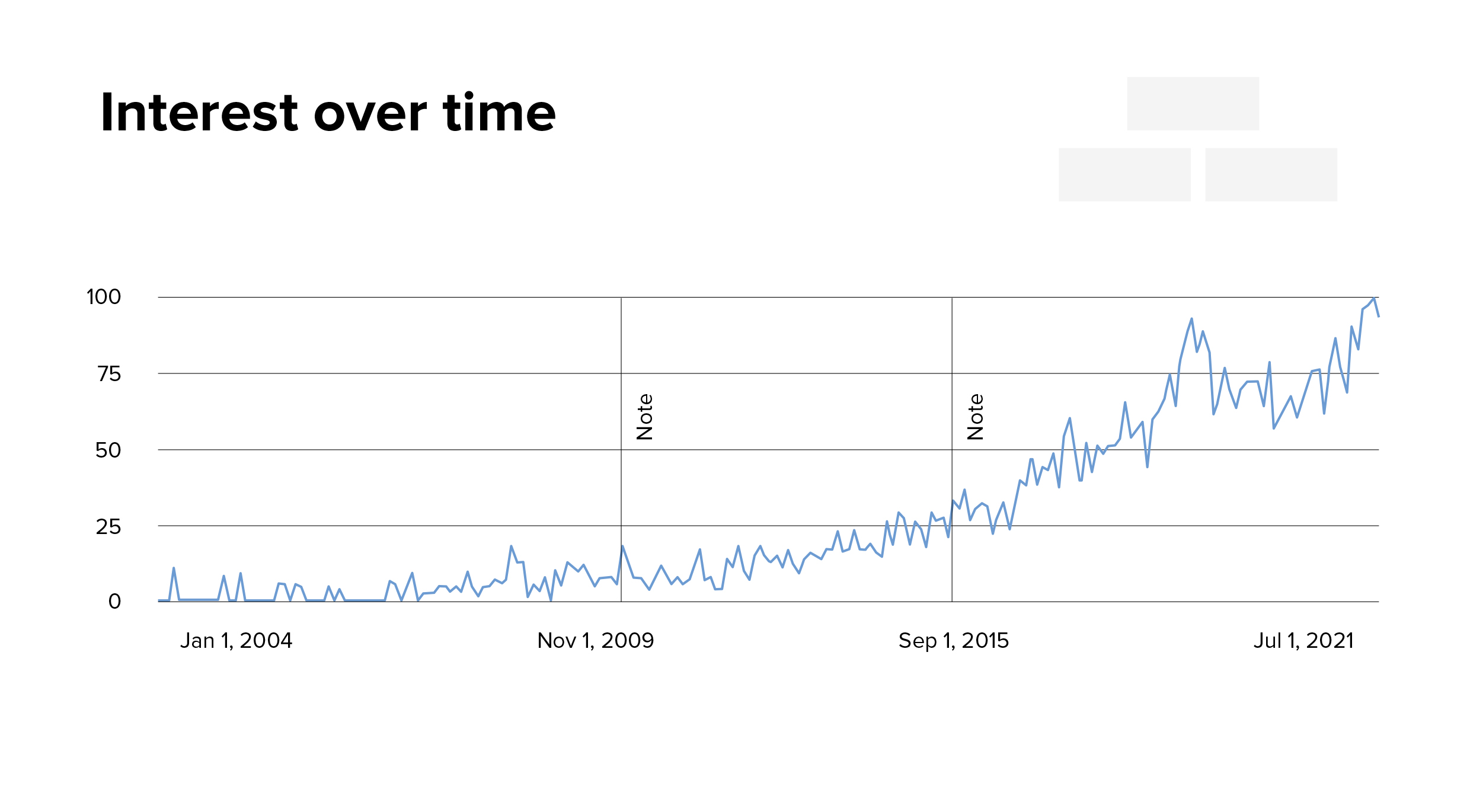
However, the website’s traffic growth didn’t just come from an increase in search volume. Yes, people were searching for topics like “sales enablement,” “sales coaching,” and “enablement” more than ever before (notice the spike in the summer of 2019)—but Highspot started winning those keywords.

Search engine optimization (SEO) is a long-term game plan, but Highspot started at it from the very beginning. It took a while to catch on, but when it did, Highspot scaled the heck out of it and started pumping out content faster than ever before.
When Google starts to like you, take advantage of it.
What Content Is Performing Well?
The blog is Highspot’s biggest traffic driver. The Sales Enablement solutions and Careers pages make up about 10% of the site’s organic traffic, but the rest flows from the blog.
Looking at the topics, it’s clear the content team is targeting relevant high-value keywords. These aren’t thought leadership articles—they’re straight-up SEO content.
Topics like:
- Sales pitch examples
- Sales goals
- Spin selling
- Sales training programs
- Sales organization structure
- Coaching
- Operations
- Business enablement
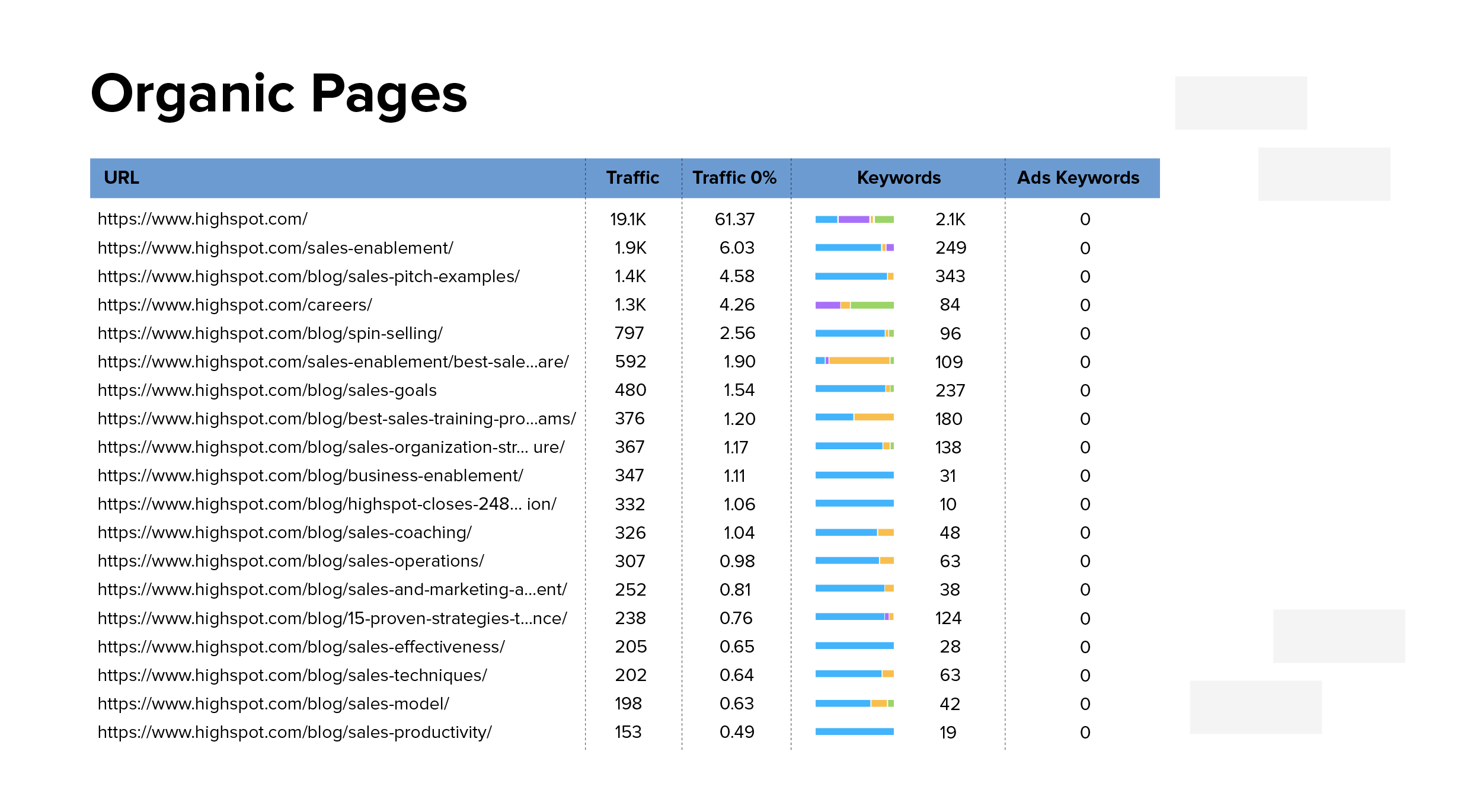
And there’s nothing wrong with that.
As Wahbe said, “There are outsized returns for winning the market,” and that’s certainly true of the organic search market, too. Win the big, broad search terms, and you’ll keep the top of your funnel flowing nicely.
The tricky part comes once you’ve drained all the low-hanging fruit, but Highspot won’t have to worry about that for some time—they still haven’t broken the 100K monthly organic search traffic milestone.
In fact, just about every single blog post they’re ranking for has the word “sales” in the title. Once they’ve exhausted that topic, they’ve got plenty of branches to pick from, such as marketing and customer service.
And there’s still a lot of traffic to win.
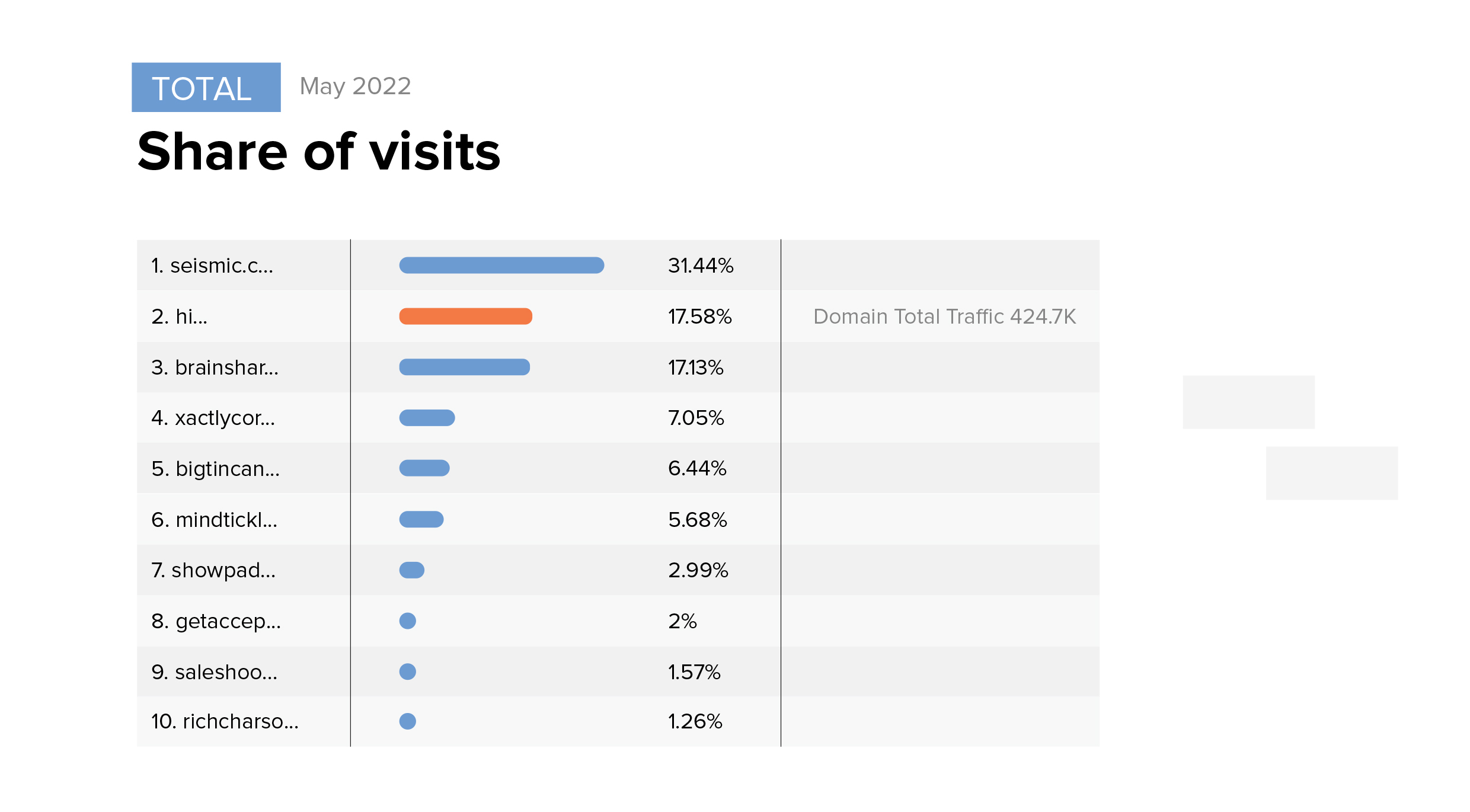
Sales enablement platform demand has exploded, but Highspot isn’t the only competitor to seize the moment. Seismic and Brainshark are putting up a fight. Bigtincan acquired Brainshark in 2021, so the collective company owns more of the market share than you’d notice at first glance.
However, Seismic has also been raising some impressive funding—so we’ll have to see who spends their money wisely to scale and win the market.
Find the Product-Market Fit Before You Scale
While you want to scale quickly, you don’t want to scale too early. Get the timing wrong, and you might scale in the wrong direction, wasting valuable time and money.
First, you need to find your product-market fit. And that takes time and money.
Robert Wahbe founded Highspot in 2012, but you probably didn’t hear about it way back then. Heck, you probably didn’t hear about Highspot until 2019 or 2020.
That’s because Wahbe bided his time, spent money wisely, and waited for the right opportunity. He waited until they found the right product-market fit before securing the capital they needed to scale.
“Being really frugal before you have that product-market fit is a really critical thing,” said Wahbe.
Fortunately, Wahbe found the product-market fit before the pandemic accelerated the market. Highspot was perfectly positioned to sell its platform to sales and marketing teams in need.
And, of course, raising more than half a billion in funding didn’t hurt, either.
Go Global When There’s International Appetite
Highspot has tons of website traffic from across Guatemala, Brazil, China, Serbia, and more. While the United States looks to be a focus, it’s not their only priority.
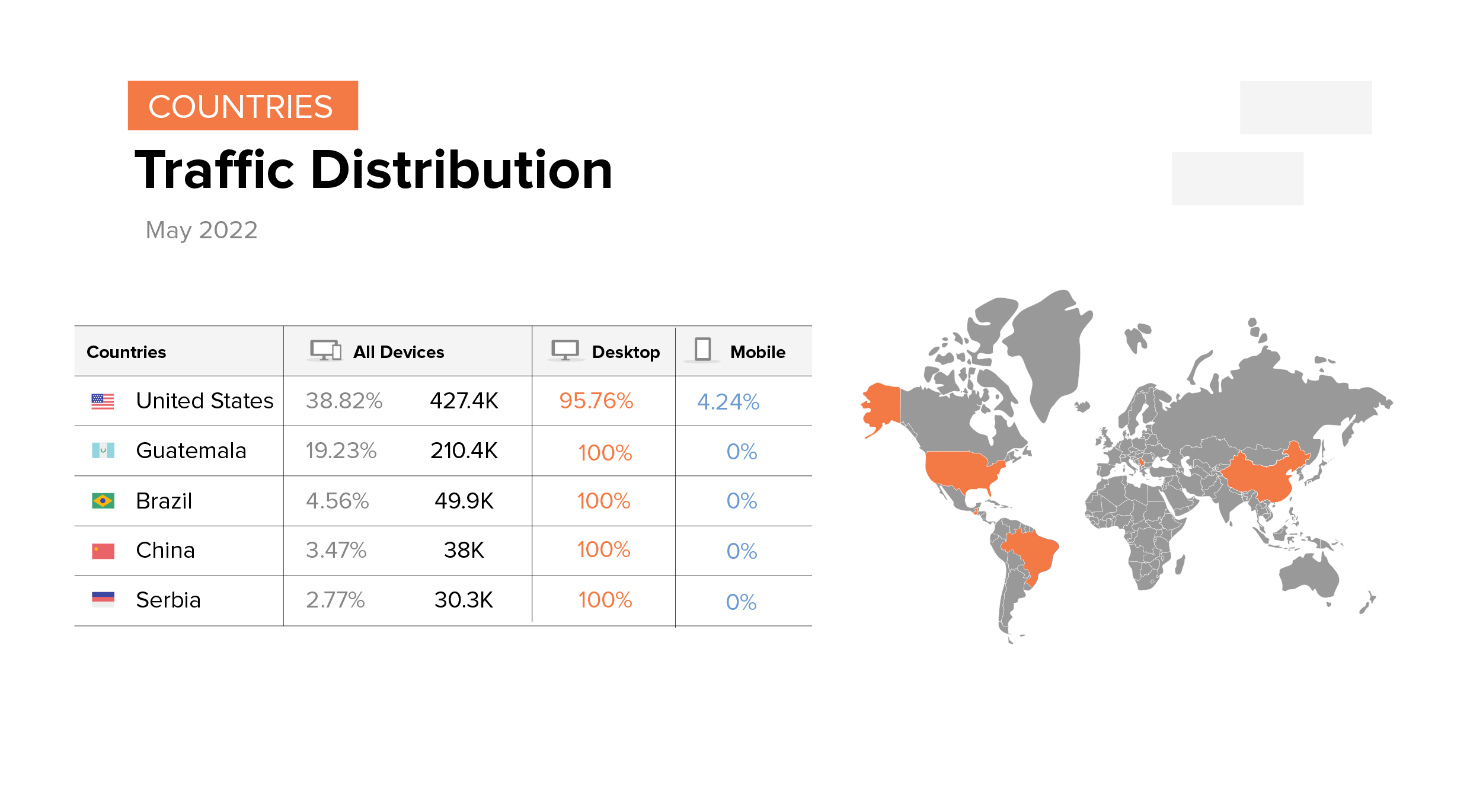
CEO Robert Wahbe plans to spend their Series F funding on “international expansion” (among other things), which makes sense given that sales enablement is a global concern.
Highspot’s revenue across the United Kingdom, Germany, and northern Europe more than doubled in 2021. Highspot plans to open offices in France, Australia, and New Zealand markets to satisfy the growing demand and provide localized help.
And, from an organic traffic perspective, they’re already executing the plan nicely.

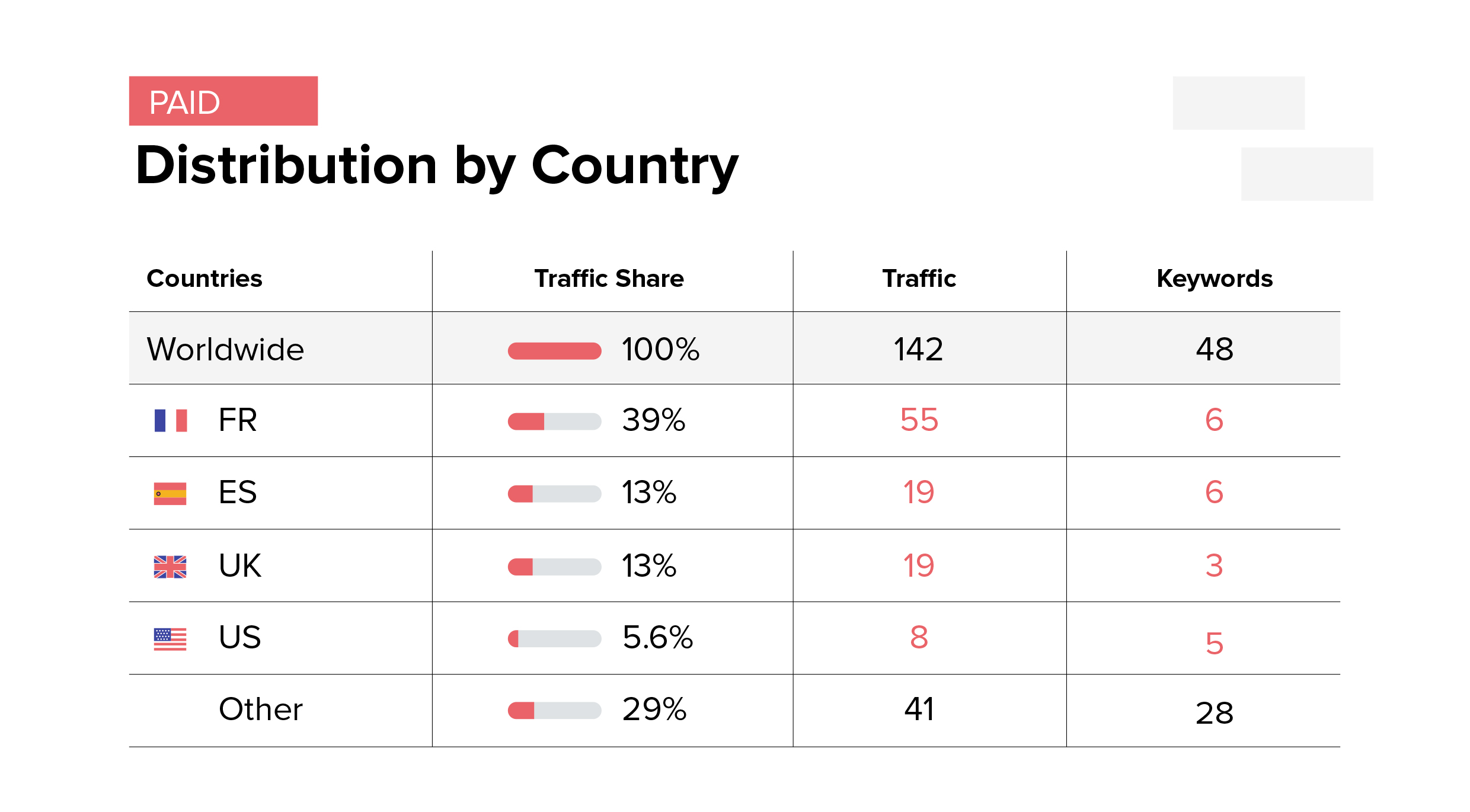
Traffic from Europe and India is making up a nice chunk of their search traffic, which looks to be where they’re spending their paid budget (albeit small budget).
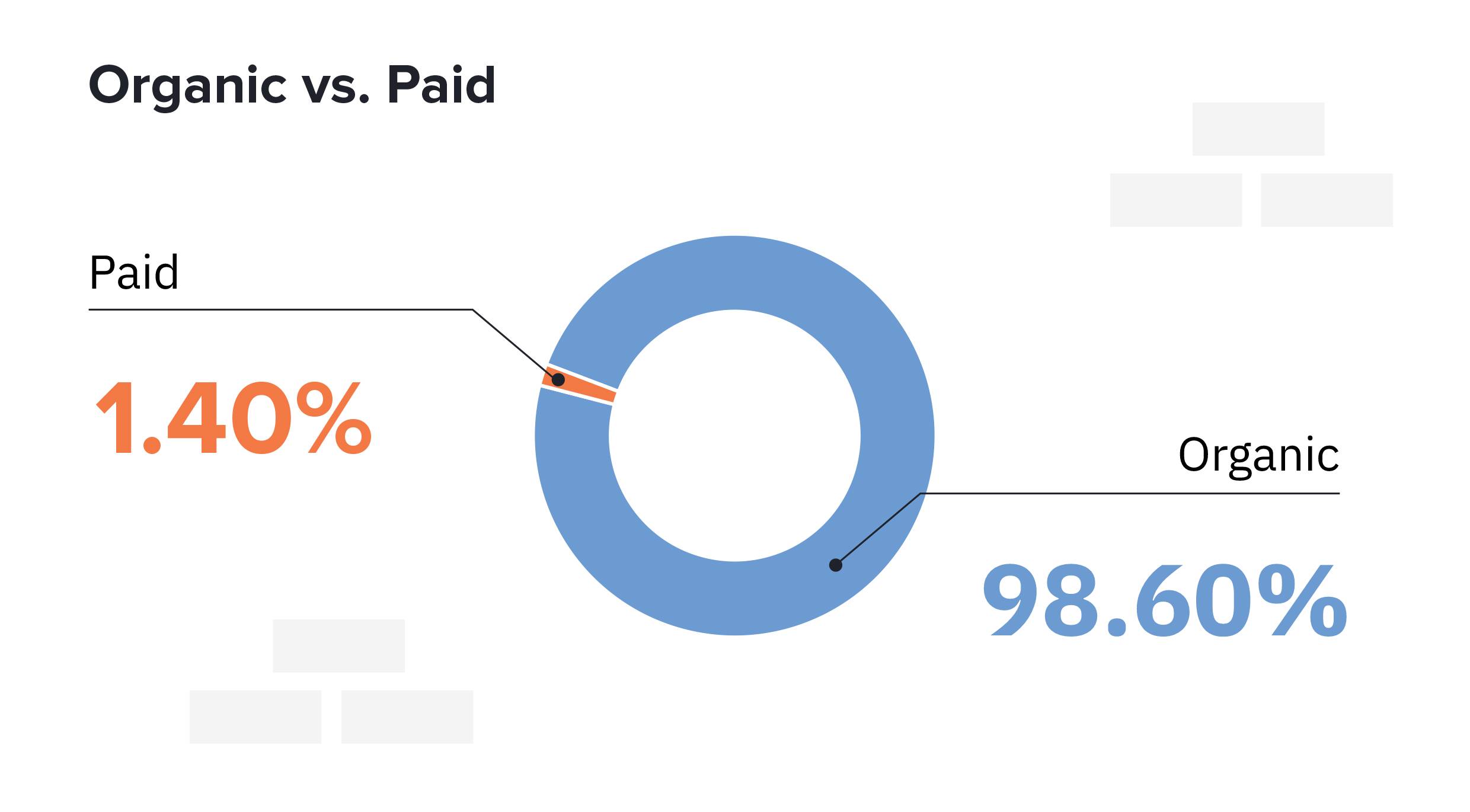
Paid traffic is definitely a missed opportunity for Highspot at this point. While the organic traffic is growing and money is flowing into the company, the amount of paid traffic hasn’t grown much in recent years. However, there looks to be a spike in May 2022, which could be a sign of greater ad spending moving forward.
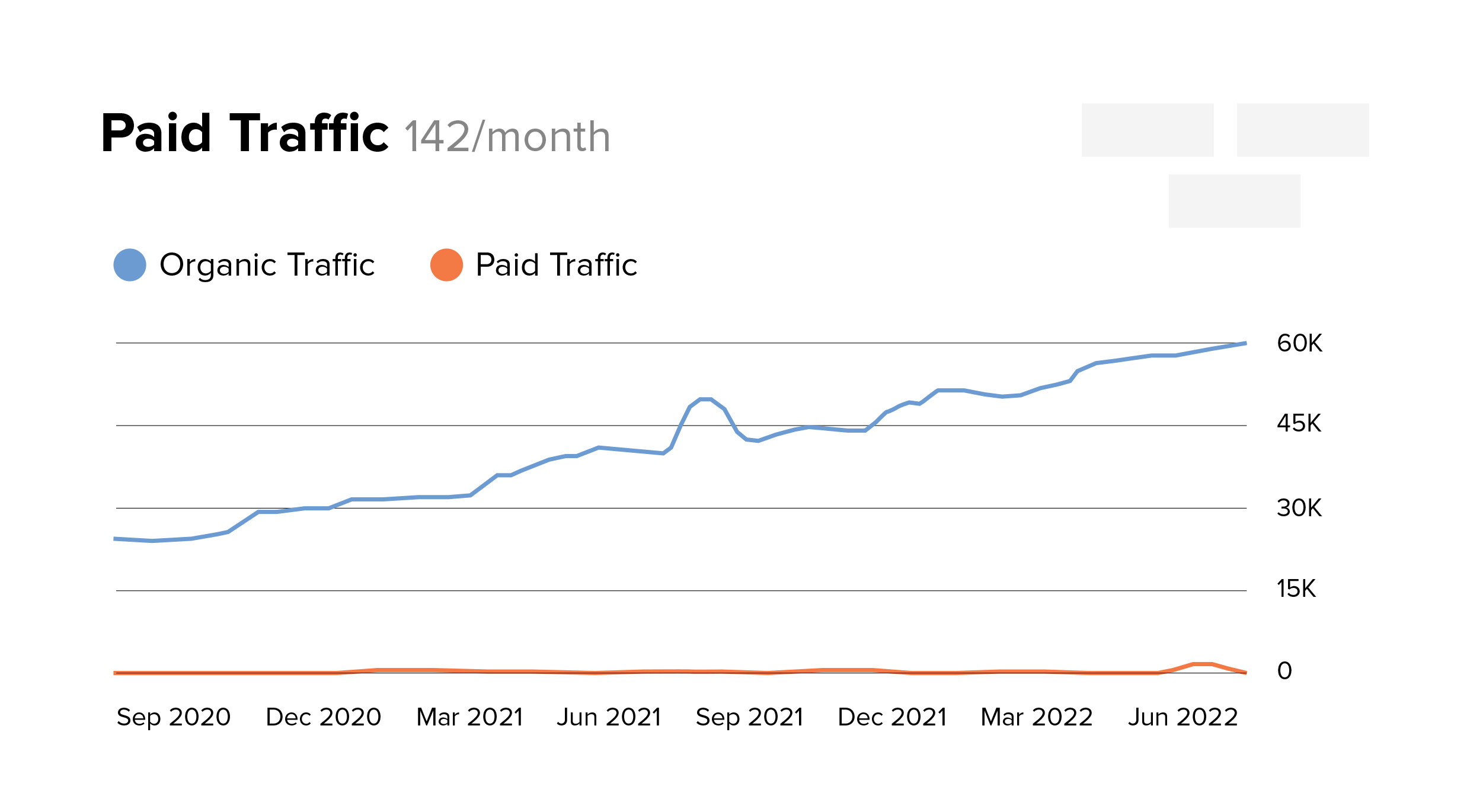
Lessons You Can Learn from Highspot
Here’s what you can take away from Highspot’s success:
- Wait for Your Moment: Raising capital might not be the best option right now. Find your product-market fit on a budget, and then find the funding when you’re ready. Go too early, and you might blow all your cash (and your chance).
- Scale Quick. Scale Big: When the moment’s right, go all in. Hire more people, create more content, and expand your product—when there’s an opportunity to steal a piece of a blossoming market, don’t miss your shot.
- Target the Low-Hanging Fruit First: Your product or service likely has plenty of low-hanging fruit to go after first, especially when it comes to SEO keywords. Win those first, and worry about the rest once that well has run dry.
- Go Global: Many brands stick to their domestic region because it’s easy and comfortable. Going international is hard. There are culture and language barriers to hurdle, but the effort is worth it—especially when you want to grab a piece of the market.
Opportunities like this don’t come around often for every brand or industry. If you notice rising demand or a surging need, don’t wait to jump on it—follow Highspot’s lead and capitalize quickly.







